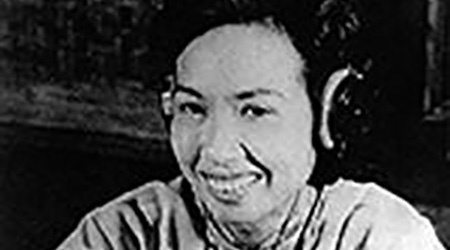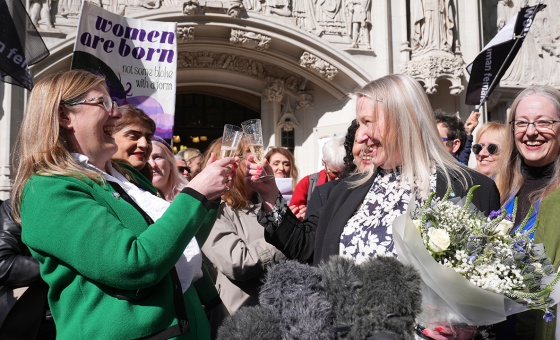This is the last article you can read this month
You can read more article this month
You can read more articles this month
Sorry your limit is up for this month
Reset on:
Please help support the Morning Star by subscribing here
WHAT is it with you Morning Star readers? It’s Sunday afternoon and I’m snoozing in my tiny back yard. Butterflies are flittering and bees and wasps going about their buzzy business.
Messages arrive suggesting that I stop relaxing and get on with some work. Not just any work, they want me to write request articles.
One has seen a letter in the Star and thinks I’m the ideal person to tell the story of Hanoi Hannah, a sort of Vietnamese Vera Lynn — well, not quite.
The other tells me I need to tell the story of the Battle of Bamber Bridge, one of the worst examples of US state, police and army racism ever — and this one happened in Lancashire.
I was more interested in writing about the steady stream of shiny bluebottles being lured to their deaths by the pitcher plants in my microscopic replica of a Louisiana swamp. I just love plants that eat flies.
It was no good, just like that tune that you hear and just can’t get out of your brain — don’t they call them earworms? The two ideas for articles could not be removed. So here goes.
The first time I visited the US, in 1992, there were still public toilets marked “White” and “Colored.”
It was most noticeable in Florida and the South, and worst of all in Louisiana, where I was looking for pitcher plants and venus fly traps.
So let’s start with the Battle of Bamber Bridge, when black US troops stationed in small Lancashire town near Preston fought street battles against white US military police (MPs).
It started on the night of June 24 1943, in a typical British thatched country pub called the Olde Hob Inn.
Friendly British and black US drinkers were stretching drinking-up time.
Five hours later black US Private William Crossland was dead, four other black US soldiers were badly injured, and 27 had been arrested.
Black US troops usually fitted in well in British towns and villages. Most locals had no issues with them, seeing them simply as allies in the fight against fascism.
Not so the white US troops, officers and MPs — their ingrained racism caused many clashes on and off the US bases. In 1944 alone there were 44 such incidents.
That night in the Olde Hob Inn, the white MPs arrived and didn’t like black soldiers drinking with British men and, more particularly, with white women.
They tried to arrest Private Eugene Nunn on some trumped-up charge of not wearing proper uniform.
A white British soldier challenged the MPs: “They’re not doing anything or bothering anybody.” A fist fight started.
The MPs came back with reinforcements, some with machine guns. They found the black troops returning to base and opened fire. Black US Private William Crossland died with a bullet in his back.
When news of the shooting reached the camp, scores of men, some carrying rifles, headed for town.
The arrival at around midnight of more MPs with a machine-gun-equipped vehicle convinced many of the black soldiers that the MPs intended to kill them. They picked up their rifles to defend themselves.
Battles broke out in the streets where a British officer claimed that the MPs had ambushed the black soldiers and started the fight.
Eventually 32 black troops were arrested. Later they were all found guilty at courts marshal held in Devon as part of the great efforts made to keep the battle out of the media.
Just before the incident many of the black Americans had heard the news filtering from Detroit that defenceless black men had been attacked by racist police.
There, 25 African-Americans lost their lives, 700 were injured and 1,800 arrested. No whites were killed by police.
In 1948 US president Harry Truman signed an order which in theory led to an integrated US army.
That didn’t prevent some victorious black troops returning from Britain to the Jim Crow South being lynched, still in their army uniforms.
More than 70 years on, the battle for real racial equality in the US has still to be won.
The next request is also set among US soldiers, many of them black and fighting in a foreign land, this time Vietnam.
US troops called her Hanoi Hannah. Her real name was Trinh Thi Ngo, but she called herself Thu Huong, “The Fragrance of Autumn.”

She was North Vietnam’s chief voice of propaganda, reaching out over the airwaves to US servicemen across South Vietnam, attempting to convince them that the war was immoral and that they should lay down their arms and go home.
She is featured in Spike Lee’s recent Vietnam film, Da 5 Bloods, which is probably why readers want to know a bit more about her.
US soldiers in camp or in the field would disobey orders and tune into her broadcasts.
In impeccable English she would ask: “How are you, GI Joe?”
“It seems to me that most of you are poorly informed about the going of the war, to say nothing about a correct explanation of your presence over here.
“Nothing is more confused than to be ordered into a war to die or to be maimed for life without the faintest idea of what’s going on.”
A simple message, but a powerful weapon in the battle for hearts and minds that eventually won the Vietnam war.
Thu Huong was born in Hanoi in 1931. As a girl she loved US films and learned the language to watch them without subtitles.
She joined the Voice of Vietnam, the country’s largest radio station, in 1955 as a volunteer.
Her English soon got her a staff job reading the news to Asia’s English-speaking countries.
When the first US Marines landed at Danang in 1965, her station, which was based in the north, started broadcasting to the US troops.
Thu Huong broke one of the most shocking stories of the Vietnam war — the massacre of several hundred civilians in the village of My Lai in 1968.
Her broadcasts didn’t pull any punches. She encouraged US troops to frag — assassinate with fragmentation grenades —officers, or simply to desert.
She would often feature interviews with downed US pilots or from US anti-war advocates like Jane Fonda.
Thu Huong often directed her comments to black US GIs. In one broadcast, she told the story of black GI Billy Smith.
When a fragmentation grenade went off in barracks in Bien Hoa, killing two officers, Smith was put in jail. The evidence that showed Smith guilty, Thu explained, was being black, poor and against the war.
When violence broke out in Detroit in July 1967, the official US stations kept silent.
Thu Huong had the story. One soldier, Mike Roberts, from Detroit said: “Hannah comes on and she knows what guard unit was called in and what kind of weapons were used.
“That’s when it starts to hit home. We knew what kind of fire power and devastation that kind of weapon can do to people, and now those same weapons were turning on us, you know, our own military is killing our own people. We might as well have been Viet Cong. Hannah talked about it.”
Where did she get her news? “The official US army Stars and Stripes magazine,” she says, “We had it flown in every day. We also read Newsweek, Time and several US newspapers.”
Thu Huong saw victory, and then peace come to her people. She died on September 30 2016 at the age of 85. She remains one of Vietnam’s greatest heroes.
I’m not sure if I like this request business, but can I ask a favour? Now can some of you request that the editor allows me to write a nice piece on plants that eat flies?











